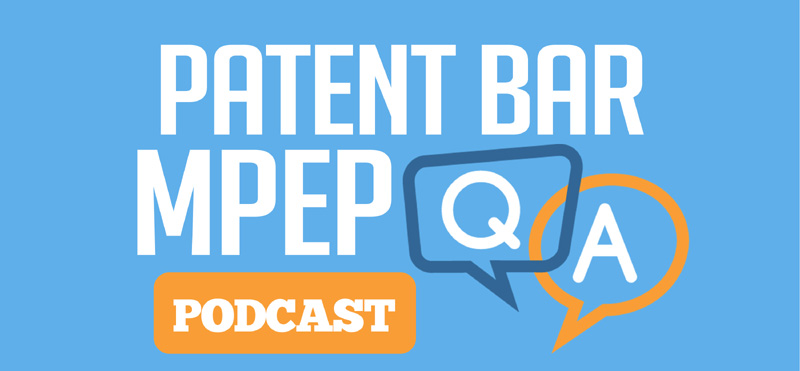
Podcast: Play in new window | Download
Subscribe: Apple Podcasts | RSS
Question:
A subject matter eligibility rejection under Step 2 should provide an explanation for each part of the Step 2 analysis; Step 2A and Step 2B. What specifically should a rejection identify under Step 2A?
Answer:
For Step 2A, the rejection should identify the judicial exception by referring to what is recited (i.e., set forth or described) in the claim and explain why it is considered an exception.
- For example, if the claim is directed to an abstract idea, the rejection should identify the abstract idea as it is recited (i.e., set forth or described) in the claim and explain why it corresponds to a concept that the courts have identified as an abstract idea.
- Similarly, if the claim is directed to a law of nature or a natural phenomenon, the rejection should identify the law of nature or natural phenomenon as it is recited (i.e., set forth or described) in the claim and explain using a reasoned rationale why it is considered a law of nature or natural phenomenon.
Chapter Details:
The answer to this question can be found in chapter 2100 of the MPEP. This chapter covers Patentability.
The answer is from the 9th Edition, Revision 08.2017. Depending on future changes to the MPEP, the question and answer may or may not be applicable in later Editions or revisions.
Section Summary:
This question and answer comes from section 2106.07(a) of the MPEP. The following is a brief summary of this section:
2106.07(a) Formulating a Rejection For Lack of Subject Matter Eligibility
After determining what the applicant invented and establishing the broadest reasonable interpretation of the claimed invention, the eligibility of each claim should be evaluated as a whole using the analysis detailed in MPEP § 2106. If it is determined that the claim does not recite eligible subject matter, a rejection under 35 U.S.C. 101 is appropriate. When making the rejection, the Office action must provide an explanation as to why each claim is unpatentable, which must be sufficiently clear and specific to provide applicant sufficient notice of the reasons for ineligibility and enable the applicant to effectively respond.
